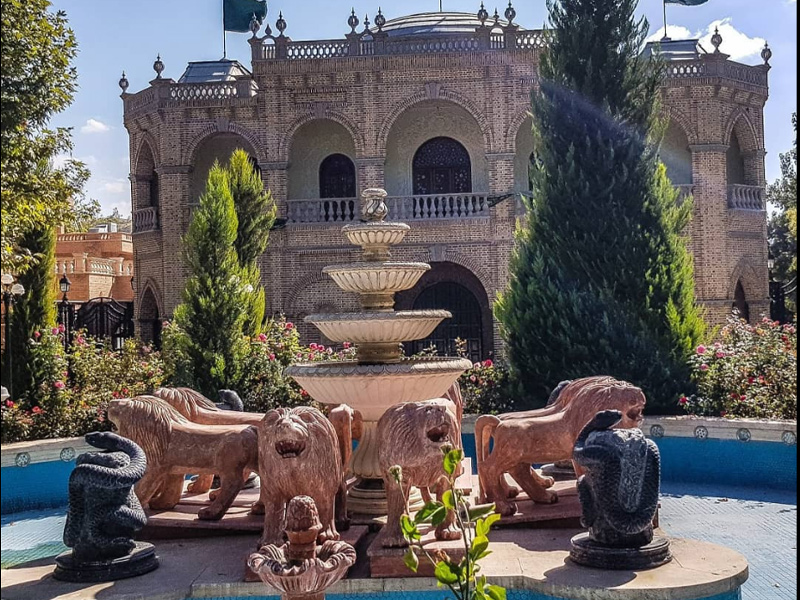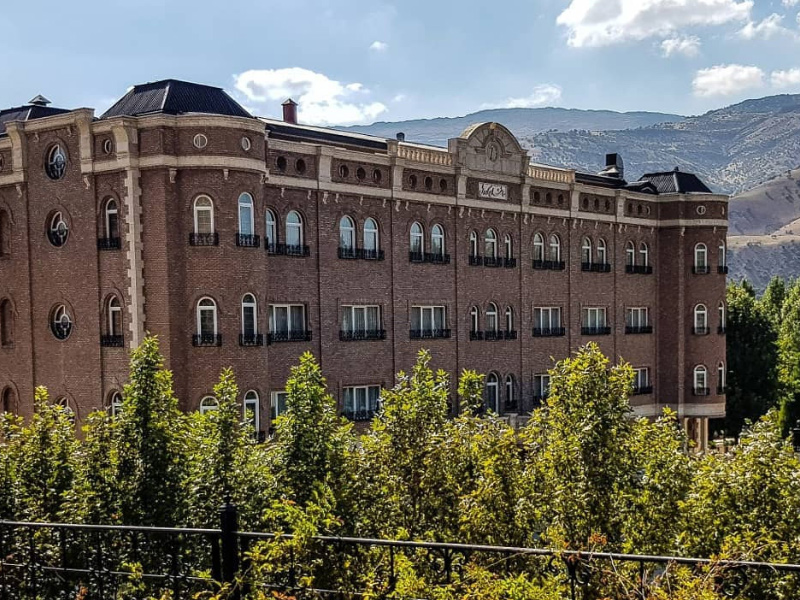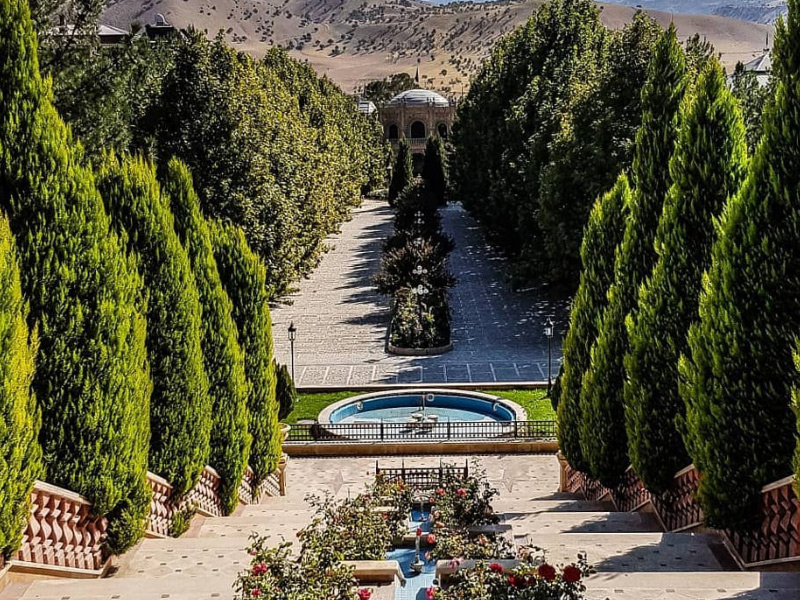There is a village called Garah Ban in the province of Kermanshah, located in Harsin County. Its Russian architecture has made it very attractive and renowned among tourists. This village is considered part of the historical monuments and tourist attractions of Kermanshah province and has been the burial place of many Ahl-e Haq luminaries. Garah Ban is famous for being one of the major centers for processing rosewater and herbal distillates, and its products are distributed throughout the country and even abroad, such as in France. The villagers are engaged in various occupations, including farming, horticulture, animal husbandry, nursery cultivation, and the production of roses, rosewater, and medicinal plants. In this article from Eligasht, we will explore more about Garah Ban Village in Kermanshah.
Book Iran Air flights from London to Tehran and Tehran to London with Eligasht UK:
Garah Ban in Kermanshah
Kermanshah province can be considered a tourist paradise in Iran, as it not only boasts historical sites but also possesses very special and attractive natural landscapes. Kermanshah is renowned as one of the country’s tourism hubs due to its artistic and historical treasures. When words fail to describe the wonders of this province, the only way to experience them is to book a hotel and explore this fascinating city, where the history of Iran can be witnessed not only in contemporary times but also from the beginning of Aryan civilization and the grandeur of the Sassanian era. These historical sites not only evoke pride and honor but also captivate every beholder with admiration.
This time, we have ventured towards a village that may be less familiar to you, called Garah Ban Village in Kermanshah, which is a remarkable and renowned rural area due to its Russian architecture. Garah Ban Village in Kermanshah is a sacred place for Sufis, and the reason behind it is the existence of a place known as “Ojaq-e Hazrat-e Agha Bakhsh” and another stove used by the elders and close associates of this Sufi sect. In this area, except for Fridays, guests are welcomed on a vow basis every day.
A Brief History of Garah Ban Village in Kermanshah
If we want to briefly talk about the history of Garah Ban Village in Kermanshah, according to what archaeologists have said, evidence of settlement in this village has been observed before recorded history, indicating its significant role in the Middle East and Asia. One of the oldest signs of human presence in this village dates back to the Paleolithic period, proven by the discovery of stone tools in the current Harsin region, estimated to be at least two hundred thousand years old.
This shows that the village has a very ancient history. It is interesting to note that during the Sassanian era, Kermanshah province was used as a summer capital. After the advent of Islam and the Arab invasion of Iran, the Ahl-e Haq sect emerged from the 11th century onwards, and the community living in Garah Ban is known as Atashbeygi or Mashayekhi, which is one of the branches of this sect. They have built and maintained this place and developed it with the help and support of their followers.
Accommodation in Garah Ban Village in Kermanshah
If you don’t want to stay in hotels in Kermanshah, you can spend the night with the hospitable locals of Garah Ban Village in Kermanshah. However, it should be noted that the existing hotels in the city, such as Parsian and Lal Hotel Bisotun, are among the best in the province. During seasons when the village welcomes many travelers, there are local food markets and products available in the village, which are distributed among tourists as offerings. All these conditions are implemented in different ways depending on the number of tourists present.
Rosewater Products in Garah Ban Village in Kermanshah
Garah Ban Village is internationally famous for the production of rosewater. The livelihood of the village residents involves various methods such as agriculture, animal husbandry, and industrial product processing. They have a great determination to carry out quality production activities, which is evident in the herbal products brands named after the village, which have gained global recognition. Rosewater rose oil, and mint distillates from this region are exported to countries around the world. With the fertile soil in this area, the residents of this village have an exceptional opportunity to offer high-quality souvenirs and unique local cuisine to tourists. The taste of authenticity and quality remains an unforgettable memory in the minds of tourists visiting this region.
Maintaining Order in Garah Ban Village
One of the most important aspects observed in Garah Ban Village is its orderliness and unique architecture. The village has beautiful gardens and water features, and to reach the main building, you must pass through a grand boulevard adorned with artistic floral decorations. The wider and more magnificent the boulevard becomes as you approach the main structure, which is near a mausoleum, it seems as if a colorful carpet has spread to the mountain peak. When you wander through this village, you will encounter a path that is guarded and closed off at the foot of the mountain.
This path has a specific style and is intended for entering the grounds of the main building. The reason for this is that on Fridays and even some months of the year, the main building is closed to tourists. This closure is due to attending to internal affairs, carrying out specific tasks, harvesting village products, and conducting special religious ceremonies for the residents of the village. This is why tourists should inquire about acceptance and access to the village before visiting.

Transportation Routes to Garah Ban Village in Kermanshah
If you want to travel to this village, there are various means of transportation available such as airplanes, buses, and private cars, depending on your preference. One of the most cost-effective ways is by bus, which will take you to Kermanshah, and from there, you’ll need to take a taxi to Garah Ban Village. However, keep in mind that the taxi fare can be quite high.
Depending on how smartly you plan your trip and schedule your visit to this place, if you travel by private car, you can spend less on transportation.
Access Route to Garah Ban Village in Kermanshah
To reach Garah Ban Village in Kermanshah, you first need to make your way to Kermanshah Province. Then, you can take a taxi or a private car available in the area and head towards Garah Ban Village in Kermanshah. To reach the village, you should first go to Shohada Square and then proceed to Shahid Keshvari Boulevard. After passing through the industrial town of Faraman, which is a few kilometers after the Bisotun intersection on the Harsin side, you will need to ask the locals in the area for the exact directions to reach your destination promptly.
Related post
Moaven-Ol-Molk’s Mausoleum, a Gem of Iranian Heritage
Anahita Temple, Kermanshah Province
Final words
In conclusion, Garah Ban Village is a hidden gem in Kermanshah province, offering a perfect blend of natural beauty, cultural heritage, and warm hospitality. As more travelers discover this enchanting destination, it is sure to become a must-visit location for those seeking an authentic and unforgettable experience in Iran.

FAQ
1- Where is Garah Ban Village located?
Garah Ban Village is located in Kermanshah province in western Iran. It is nestled amidst the stunning mountainous landscapes of the region.
2- What are the main attractions in Garah Ban Village?
Garah Ban Village offers a range of attractions for visitors. Some of the main highlights include its breathtaking natural beauty with mountains, valleys, and waterfalls, the traditional mud-brick architecture of the houses, the warm hospitality of the local people, the ancient Garah Ban Castle, and the nearby Bisotun UNESCO World Heritage Site with its rock reliefs and inscriptions.
3- How can I reach Garah Ban Village?
To reach Garah Ban Village, you can take a scenic drive from the city of Kermanshah. The journey takes you through winding mountain roads, offering picturesque views of the surrounding countryside.
4- Are there hiking trails in GarahBan Village?
Yes, Garah Ban Village is a paradise for hikers and nature lovers. There are hiking trails that wind through the mountains, providing stunning panoramic views of the area. Whether you’re an experienced hiker or a casual nature enthusiast, you can find trails suitable for your level of expertise.
5- Can I experience the local culture in this Village?
Absolutely! The villagers in Garah Ban are known for their warm and welcoming nature. Visitors are often invited into the homes of the locals, where they can experience traditional music, dance, and delicious local cuisine. This offers a unique opportunity to immerse yourself in the rich cultural heritage of the area and interact with the local community.

